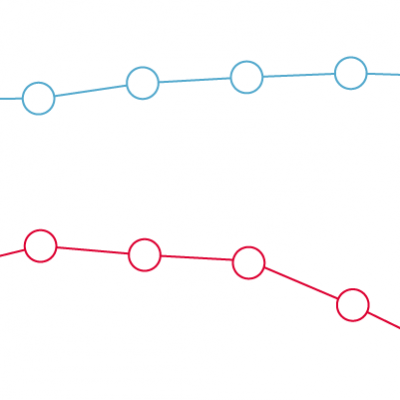Trends in employment and the Coronavirus Job Retention Scheme
19 April 2021

Key points
-
There were 681,000 fewer employees on payroll in February 2021 compared with February 2020.
-
The number of furloughed employees was just under 3.8 million in December 2020, an increase on the 2.4 million furloughed in October, but down from a peak of 8.9 million in April.
This chart shows the number of employees on payroll from HMRC real-time pay data in each month since March 2019 in the UK. It also shows the number of employees who have been furloughed on the Coronavirus Job Retention Scheme on the last day of each month from March 2020.
Furloughing, while seemingly not as protective to mental health as being in work, is associated with better mental health than unemployment. The impact on health of a lengthy duration of being furloughed or experiencing reduced pay, is not yet fully understood.
Payroll
-
At the end of 2019, the number of people on payroll had been consistently over 29 million for a couple of months and has been consistently increasing since 2014.
-
There were 681,000 fewer people on payroll in February 2020, compared with the same month in the previous year.
-
The biggest month-to-month drop in the number of employees on payroll was between March and April 2020, with a decrease of over 400,000 people.
-
There were slight increases in the number of employees on payroll between June and July 2020, then declined to January 2021. There has been a slight increase between January and February 2021.
Coronavirus Job Retention Scheme
-
The number of furloughed employees peaked at 8.9 million in April 2020 and decreased steadily until the imposition of the second national lockdown in November 2020, when the figure started to rise again. The number of furloughed employees increased by 908,000 between the end of December 2020 and the end of January 2021, reflecting the impact of the third national lockdown.
-
The last estimate of the number of people on the Coronavirus Job Retention Scheme 4.65 million employees at the end of February 2021.
-
The lockdown announced on 4 January 2021 has meant an increase in the number of furloughed workers. The Coronavirus Job Retention Scheme is set to end in September 2021. It is likely that unemployment will rise as a result but by how much will depend on the extent of pandemic restrictions still in place and the strength of the economy.
The end of the Coronavirus Job Retention Scheme could lead to many more people losing their job if companies cannot afford to retain them. The speed and shape of the economic recovery from the coronavirus pandemic will have important implications for whether there is a rise in long-term unemployment. The risks to health of prolonged durations of unemployment mean the government’s recovery plans will require targeted interventions at scale.
-
The number of employees on payroll is defined as the number of people receiving paid renumeration for work done in the reference period. It also includes people receiving renumeration for the reference period who have not done work but are an employee, such as those on paid leave. Values for the month are an average of employee counts in each day of the month. It is a measure of employees who are paid through payroll each month, as opposed to a measure of people working as an employee (and paid in a different way, such as cash). These are experimental statistics.
-
The data on those furloughed are the average number of employees who have been furloughed across each month.
Source: HM Revenue & Customs, Payrolled employee counts from PAYE RTI. Office for National Statistics, Job Retention Scheme statistics







